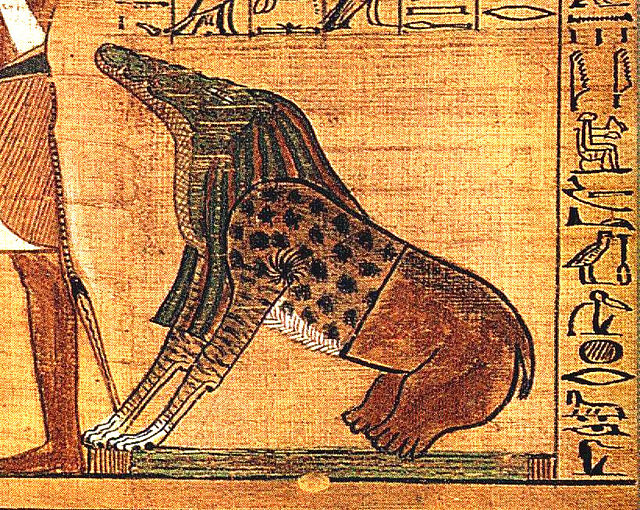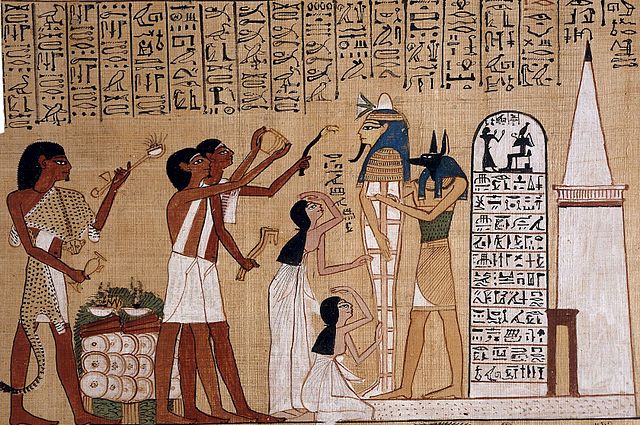Ammit was an ancient Egyptian goddess with the forequarters of a lion, the hindquarters of a hippopotamus, and the head of a crocodile—the three largest "man-eating" animals known to ancient Egyptians. In ancient Egyptian religion, Ammit played an important role during the funerary ritual, the Judgment of the Dead.
Depiction of Ammit without a mane from the Book of the Dead of Nebqed. ca. 1391-1353 BCE, late Eighteenth Dynasty.
Ammit showed at the Weighing of Ani's heart from the Papyrus of Ani. ca. 1250 BCE, Nineteenth Dynasty.
Ptolemaic depiction of Ammit standing on top of a pedestal left of the scale. She has the head of crocodile, the mane of a lion, and the body of a dog. From a Book of the Dead papyrus (ca. 2nd century BCE) in Thebes.
Judgment of the Soul from the Papyrus of Hunefer. Shows Hunefer's heart being weighed on the scale of Maat against the feather of truth, by the jackal-headed Anubis. Ammit stands ready to eat the heart if it fails the test. The ibis-headed Thoth, scribe of the gods, records the result. ca. 1275 BCE, Nineteenth Dynasty.
Ancient Egyptian afterlife beliefs
Ancient Egyptian afterlife beliefs were centered around a variety of complex rituals that were influenced by many aspects of Egyptian culture. Religion was a major contributor, since it was an important social practice that bound all Egyptians together. For instance, many of the Egyptian gods played roles in guiding the souls of the dead through the afterlife. With the evolution of writing, religious ideals were recorded and quickly spread throughout the Egyptian community. The solidification and commencement of these doctrines were formed in the creation of afterlife texts which illustrated and explained what the dead would need to know in order to complete the journey safely.

This detail scene from the Papyrus of Hunefer (c. 1375 BC) shows Hunefer's heart being weighed on the scale of Maat against the feather of truth, by the jackal-headed Anubis. The ibis-headed Thoth, scribe of the gods, records the result. If his heart is lighter than the feather, Hunefer is allowed to pass into the afterlife. If not, he is eaten by the waiting Ammit. Vignettes such as these were a common illustration in Egyptian books of the dead.
The Opening of the Mouth ceremony being performed on a mummy before the tomb. Anubis attending the mummy of the deceased. Extract from the Papyrus of Hunefer, a 19th-Dynasty Book of the Dead (c. 1300 BC)
Pyramid Text within the burial pyramid of Teti I
The 11th hour of the book Amduat







